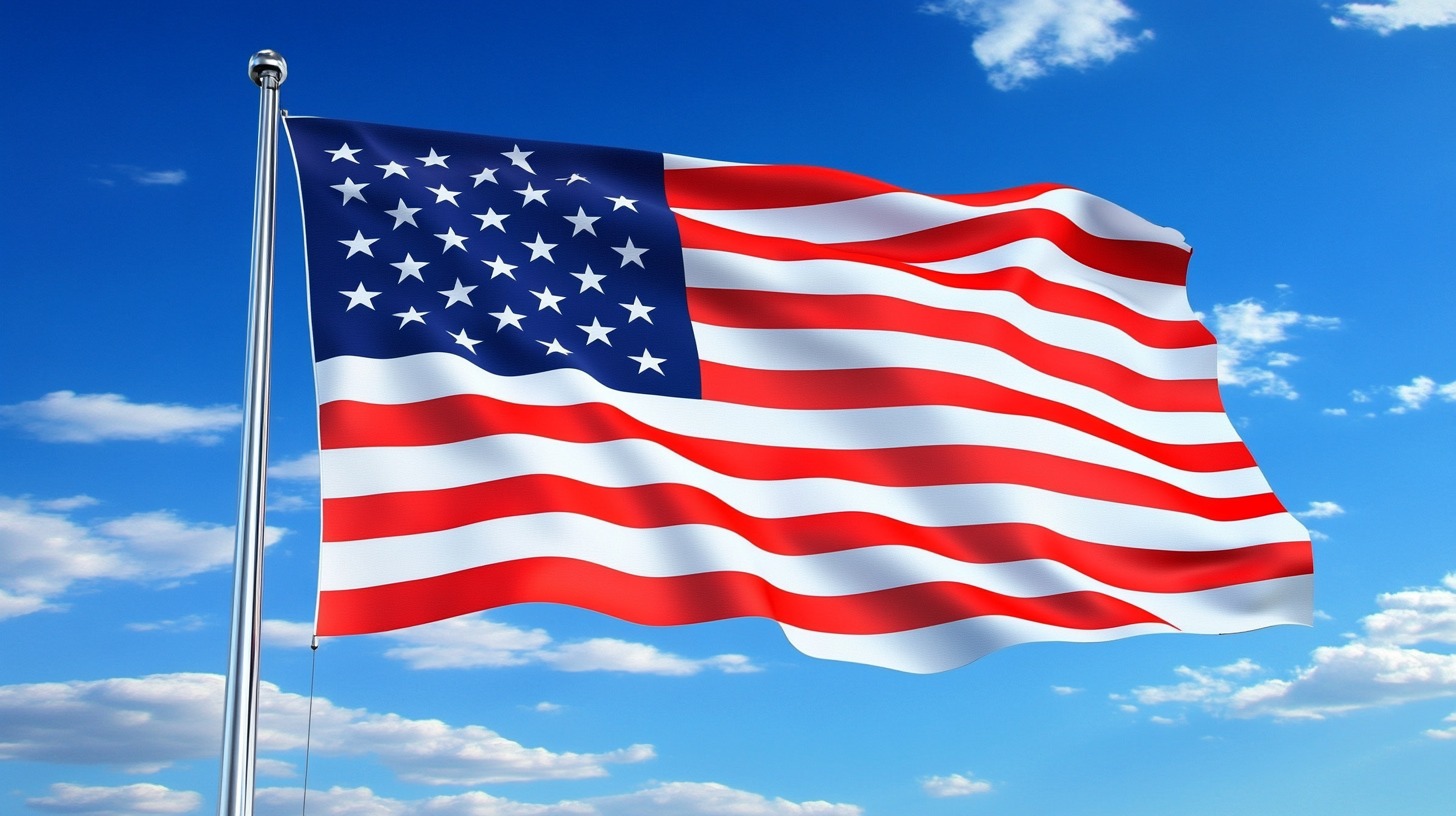Global Standards in Solar Flag Pole Lights Manufacturing and Their Impact on Quality
In recent years, the demand for solar flag pole lights has surged as more individuals and organizations seek sustainable and energy-efficient solutions for illuminating their flags. These innovative lighting systems not only enhance the visibility of flags at night but also contribute to a greener environment by harnessing solar energy. However, as the market expands, the importance of adhering to global manufacturing standards becomes increasingly paramount. Ensuring that these products meet rigorous quality benchmarks is essential for consumer satisfaction and safety.
The impact of global standards in the manufacturing of solar flag pole lights extends beyond product performance; it influences the entire supply chain, from production practices to end-user experience. By aligning with international guidelines, manufacturers can ensure that their solar flag pole lights are reliable, durable, and efficient. This adherence not only boosts consumer confidence in the products but also drives innovation within the industry, setting a foundation for future advancements. As we delve into this topic, we will explore the significance of these standards and their role in shaping the quality of solar flag pole lights.

Importance of Global Standards in Solar Flag Pole Lights Manufacturing
The manufacturing of solar flag pole lights has grown rapidly, driven by advancements in solar technology and increasing demand for sustainable solutions. In this context, global standards play a vital role in ensuring product quality and reliability. According to a report by the International Energy Agency (IEA), the global solar power capacity reached over 900 GW in 2021, reflecting not only the growth of the market but also the need for standardized manufacturing processes to maintain high-quality output.
Global standards provide a framework for manufacturers to adhere to best practices, focusing on design, materials, and performance. The International Electrotechnical Commission (IEC) has established standards such as IEC 61215 for photovoltaic modules and IEC 61730, which ensures the safety and performance of solar lights. Compliance with these standards is crucial, as it assures consumers that the products they are purchasing meet rigorous quality benchmarks. Data from the Solar Energy Industries Association (SEIA) indicates that 70% of consumers consider quality and reliability to be their primary concerns when investing in solar products, underscoring the importance of adhering to these global norms.
Moreover, adherence to global standards not only elevates product quality but can also expand market access for manufacturers. As detailed in a 2022 market analysis report by Grand View Research, companies that comply with international standards are more competitive and can penetrate new markets effectively. This adherence reduces the risk of product failures and enhances customer satisfaction, which are critical factors in the long-term success of solar flag pole lights in an increasingly competitive industry.
Impact of Global Standards on Quality in Solar Flag Pole Lights Manufacturing
This chart illustrates the correlation between the adherence to global standards and the quality ratings of solar flag pole lights across different manufacturers. High standards generally lead to better quality products, influencing consumer satisfaction and market competitiveness.
Key Manufacturing Standards and Regulations Impacting Quality
The manufacturing of solar flag pole lights is undergoing significant transformations driven by global standards and regulations, which play a crucial role in ensuring product quality. Key standards such as the International Organization for Standardization (ISO) 9001 and the International Electrotechnical Commission (IEC) 61215 focus on quality management systems and photovoltaic module performance, respectively. Adhering to these standards not only helps manufacturers enhance product reliability but also fosters consumer trust in solar technologies. According to the Solar Energy Industries Association (SEIA), adhering to established standards can lead to an increase in the market for solar installations, projected to reach over 20 GW in annual capacity by 2025.
In addition to ISO and IEC standards, regulations such as the Underwriters Laboratories (UL) certification are pivotal in ensuring safety and performance in solar product manufacturing. UL certification signifies that a product meets rigorous safety standards, and as of 2022, approximately 44% of new solar installations in the U.S. were equipped with UL-certified products. This not only reflects a commitment to consumer safety but also emphasizes the importance of compliance with industry regulations, which can enhance market competitiveness and product acceptance globally.
Moreover, manufacturers are increasingly looking to incorporate sustainable practices into their production processes as outlined in the guidelines set by the Global Reporting Initiative (GRI). These guidelines encourage transparency in sustainability practices and can improve a company's public image. A 2022 report from the International Renewable Energy Agency (IRENA) revealed that companies that implement sustainability standards experience a 25% reduction in operational risks, boosting overall quality and market standing. As the solar flag pole lighting market continues to grow, the integration of these standards and regulations will be essential in shaping its future.

Comparative Analysis of National vs. International Standards
In the evolving landscape of solar flag pole lights manufacturing, standards are critical to ensuring quality and performance. A comparative analysis between national and international standards reveals significant disparities that directly impact product reliability. According to the International Electrotechnical Commission (IEC), only 25% of manufacturers comply with international standards, while many national standards lack comprehensive testing protocols, leading to potential inconsistencies in quality.
One prominent example is the difference in luminaire efficiency requirements. For instance, the U.S. Department of Energy mandates a minimum luminous efficacy of 100 lumens per watt for outdoor lighting, while several national standards in developing nations fall short of this benchmark. As a result, the energy output and longevity of solar flag pole lights produced under varying standards can vary dramatically. Reports indicate that products adhering to international standards not only have a longer lifespan but also show an average 20% increase in energy efficiency, translating to substantial cost savings in maintenance and operation.
Furthermore, compliance with international standards such as IEC 62124 promotes uniformity in solar technology performance across markets. This harmonization fosters consumer confidence, enabling buyers to make informed decisions based on quality assurances. In contrast, products manufactured solely under national standards may present risks of subpar performance, thus highlighting the importance of advocating for global standards in the solar flag pole lights sector to safeguard quality and foster innovation.
Global Standards in Solar Flag Pole Lights Manufacturing and Their Impact on Quality - Comparative Analysis of National vs. International Standards
| Standard Type | Standard Name | Region | Quality Impact | Compliance Level |
| International | ISO 9001 | Global | High | Mandatory |
| National | ANSI/UL 244A | USA | Moderate | Voluntary |
| International | IEC 62031 | Global | Very High | Mandatory |
| National | BS 6100 | UK | High | Voluntary |
Technology Advancements and Their Role in Standard Compliance
The manufacturing of solar flag pole lights is increasingly influenced by technological advancements that facilitate compliance with global standards. As industries adapt to rigorous standards, particularly those set by organizations like ISO, the impact on product quality becomes evident. For instance, the recent updates to ISO standards—such as ISO 10218, which enhances safety standards in industrial robotics—underscore the importance of integrating safety and efficiency into manufacturing processes.
Technological innovation is a key driver in ensuring compliance with these updated standards. The advent of AI technologies, for example, allows manufacturers to monitor production in real-time, ensuring adherence to quality standards while optimizing operational efficiencies. Advanced data analytics also plays a significant role, providing companies with insights into compliance issues and enabling proactive adjustments. According to a report, companies leveraging advanced technologies in their compliance processes see a reduction in errors by up to 40%, highlighting the critical role of technology in enhancing product quality.
Moreover, as global compliance landscapes evolve, incorporating cutting-edge technology becomes essential for manufacturers aiming to stay ahead. For instance, advancements in cybersecurity measures are imperative to protect sensitive manufacturing data, while also ensuring that products meet safety standards. In light of increasing regulatory scrutiny, it has been noted that companies focusing on technology-driven compliance are better positioned to mitigate risks and enhance product reliability.
Future Trends in Solar Flag Pole Lights and Quality Assurance
The future of solar flag pole lights is bright, driven by innovations in technology and increasing demand for sustainable solutions. The global solar lighting market is expected to reach USD 21.3 billion by 2027, growing at a CAGR of 10.2% from 2020 to 2027, according to a report by Grand View Research. This trend is particularly pronounced in the flag pole lighting sector, where efficient solar lights not only enhance visibility and aesthetics but also ensure an eco-friendly alternative to traditional lighting solutions.
Quality assurance in manufacturing processes is becoming a crucial focus for manufacturers looking to capitalize on this growing market. Industry standards, such as ISO 9001, are increasingly being adopted to ensure that products meet international quality benchmarks. Reports from the International Solar Alliance indicate that adherence to these standards can lead to a 15-20% increase in customer satisfaction and a significant reduction in product returns, reinforcing the importance of quality in the solar lighting industry.
Moreover, future trends indicate a shift towards smart solar flag pole lights equipped with IoT capabilities. These lights can monitor their operation and performance, allowing real-time data analysis to optimize energy consumption and enhance durability. According to a market analysis by Research and Markets, the integration of smart technologies in outdoor lighting is anticipated to witness a 25% increase in demand by 2025, marking a fundamental change in how solar flag pole lights are designed and utilized in public and private spaces. This convergence of quality assurance and technological advancement will be pivotal in shaping a sustainable and efficient future for solar flag pole lighting.




